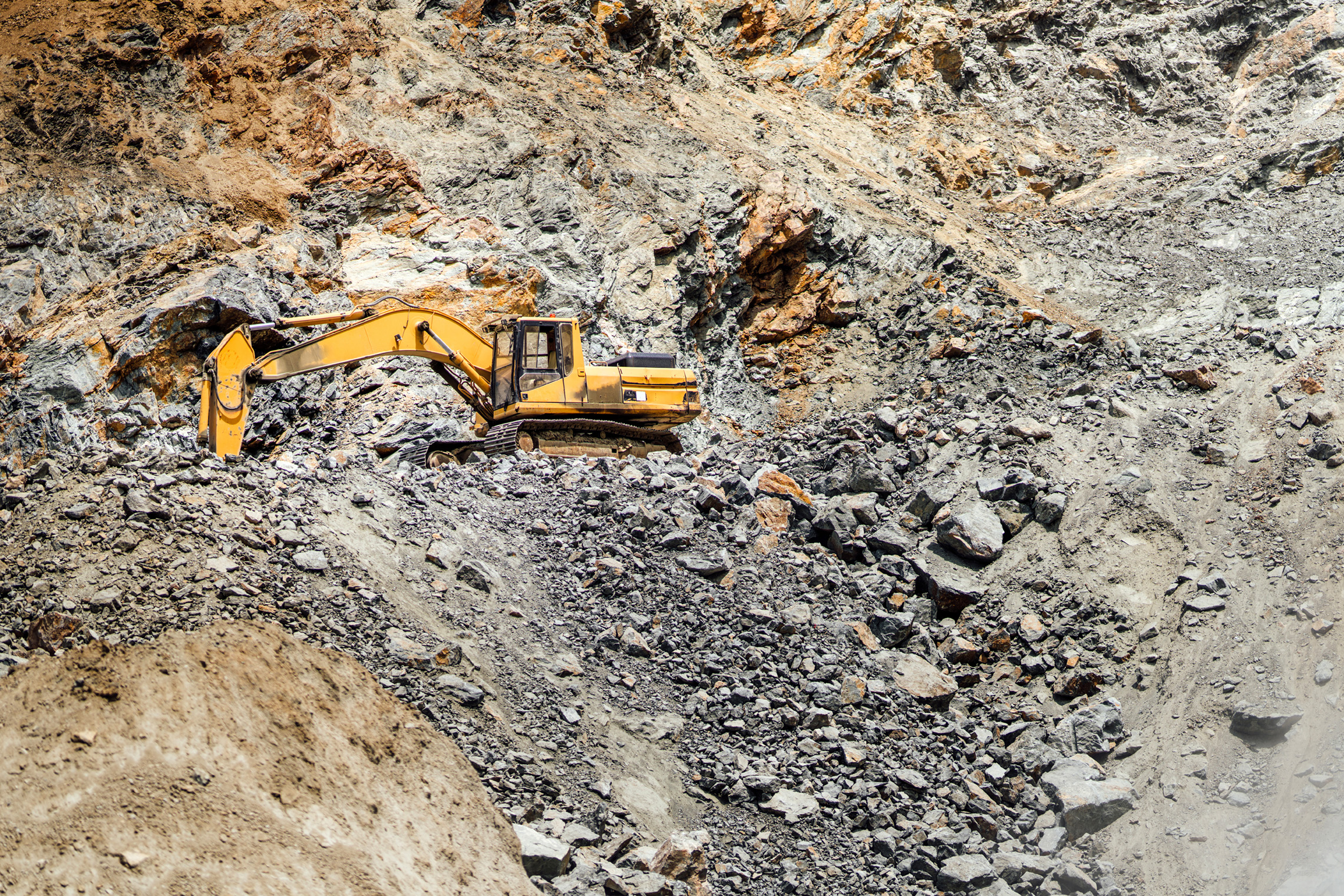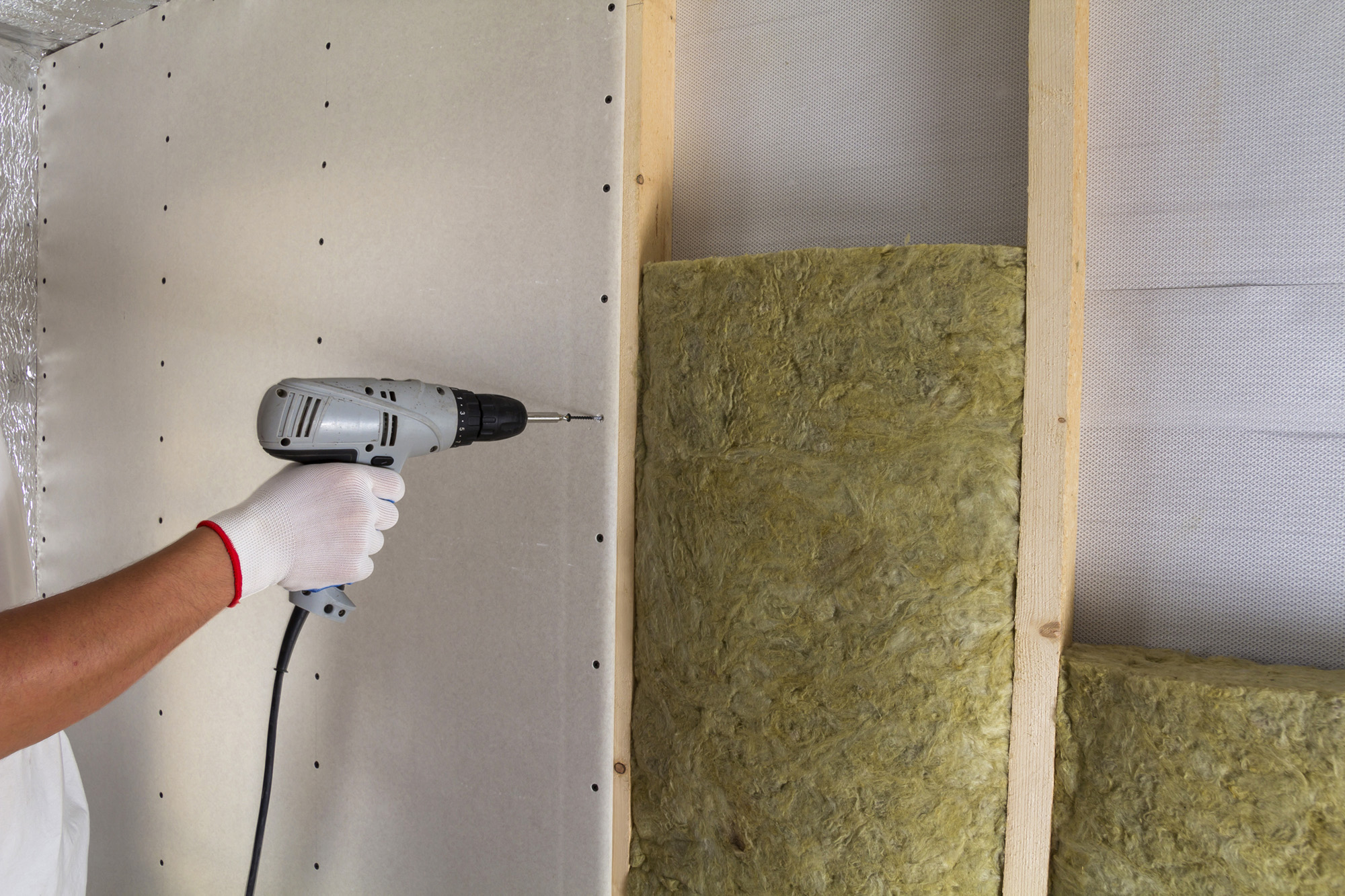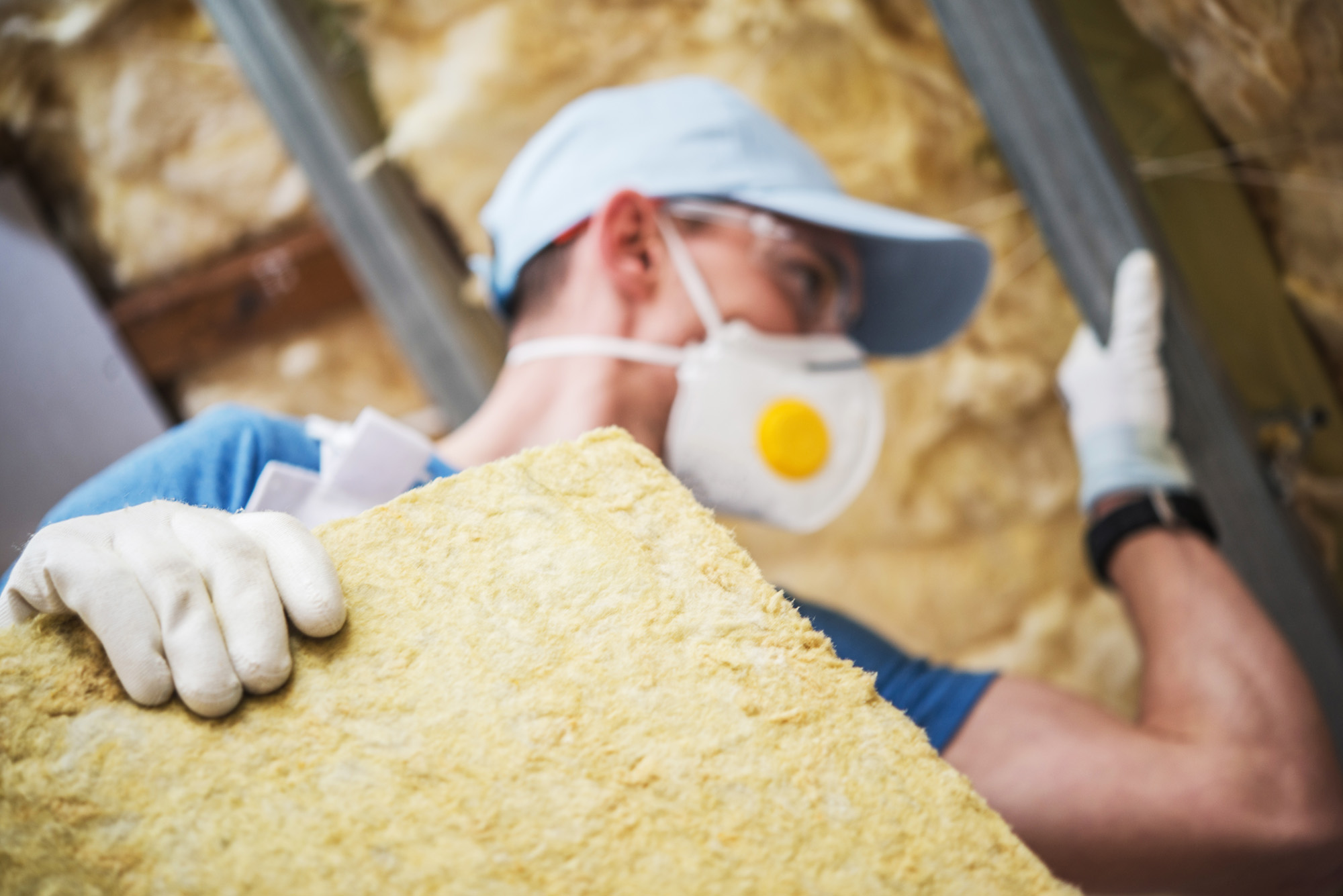STONE WOOL:
The insulating material makes the climate great.
Rock wool is a natural thermal insulation material made from basalt rock. is used. It is an environmentally friendly alternative to synthetic insulation materials and provides excellent thermal insulation.
WHAT IS ROCKWOOL?
Rock wool is a thermal insulation material extracted from basalt rock. It is obtained by heating the rock to high temperatures and then spinning into small fibres. These fibres are then made into insulation boards pressed. Rock wool is not combustible and has a good thermal insulation performance.

In the quarry the raw material is mined.
WHAT IS STONE WOOL USED FOR?
Rock wool is used in many areas, including:
- Insulation of walls and roofs in new buildings and renovations
- Sound insulation in buildings
- Fire protection in buildings
- Insulation of industrial plants and processes
Advantages of rock wool:
Environmentally friendly: Rock wool is a natural thermal insulation material and contains no harmful substances.
Fire protection: Rock wool is non-combustible and has a melting point of over 1000°C.
Good thermal insulation performance: Rock wool has excellent thermal insulation performance and keeps the building warm in winter and cool in summer.
Durable: Rock wool has a long life and does not need to be replaced.
Rock wool is a versatile and environmentally friendly thermal insulation material that is used in can be used in many areas. It offers excellent thermal insulation performance, is non-flammable and has a long service life. When you looking for a sustainable and effective solution for your insulation is Rock wool a great option.
The history of rock wool as a building material:
Rock wool is a natural thermal insulation material that has been used for many years in the construction industry is used. In this paragraph, we will review the history of the Examine rock wool as a building material and see how it changes over time. has developed.

In the 19th century rock wool was used as Insulation material for Steam locomotives used.
The beginnings:
The use of rock wool as a building material dates back to the 19th century. It was first used as insulation material for ships and locomotives, before it was used in the construction industry.
The development in the 20th century:
In the 1920s, the industrial production of stone wool began and its Use as an insulating material became more and more widespread. In the 1950s and In the 1960s, rock wool was increasingly used in new buildings because it was a cost effective and environmentally friendly alternative to synthetic insulation materials.
The present:
Today, rock wool is one of the most commonly used thermal insulation materials in the construction industry. It is used in many areas, including insulation of walls and roofs, sound insulation and fire protection.

Today, rock wool from the drywall does not indispensable.
The history of rock wool as a building material goes back over a century and shows how, over time, it has become an important part of the construction industry has developed. With its many advantages, including environmental friendliness, fire resistance and good thermal insulation performance, rock wool today is an important choice for builders and do-it-yourselfers.
„Rock wool has made a decisive contribution to reducing energy losses in buildings.“
Civil engineer

Important producers of rock wool: an overview
In this chapter, we will give an overview of some of the most important producer of rock wool.



Knauf Insulation: Knauf Insulation is one of the largest manufacturers of stone wool in the world. The Company was founded in 1932 and has its headquarters in Germany. Knauf Insulation offers a wide range of stone wool products for the construction industry, including thermal insulation, sound insulation and fire protection.
Rockwool: Rockwool is another major manufacturer of stone wool. The company was founded in 1937 and has its headquarters in Denmark. Rockwool offers A wide range of stone wool products, including thermal insulatingmaterials, sound insulation and fire protection.
Owens Corning: Owens Corning is a leading manufacturer of building materials, including. Stone-wool. The company was founded in 1938 and has its headquarters in the USA. Owens Corning offers a wide range of stone wool products, including thermal insulation, sound insulation and fire protection.
These are just some of the main producers of rock wool. There are many other companies that manufacture stone wool products for the construction industry. These companies are leaders in the development and production of High-quality rock wool products that meet the requirements of the construction industry. do justice.

Correctly applied, Today, rock wool is a Building block against the Global warming.
Environmental compatibility of rock wool:
In this article we will examine the environmental impact of rock wool and rate.
Manufacturing process:
The manufacturing process of rock wool can have negative effects on the environment. The production of rock wool requires high temperatures and energy, which can lead to CO2 emissions. In addition, it can lead to Production to emissions of pollutants such as ammonia and sulphur oxides come. However, the renowned manufacturers have developed Arrangements made.
Recycling and disposal:
The good news: rock wool can be recycled. The bad: Disposal of rock wool can also have a negative impact on the environment. have. If rock wool is not disposed of properly, it can contain harmful substances. which pollute the environment. That is why reputable builders and construction companies to dispose of the waste in an environmentally sound manner.
Alternatives:
There are alternatives to rock wool that are more environmentally friendly. These include natural insulation materials such as hemp, sheep's wool and cellulose. These alternatives are biodegradable and have a lower carbon footprint than Rock wool. Unfortunately, they are nowhere near as efficient as rock wool.
Overall, the industry is making progress in the environmental compatibility of rock wool. great progress. Rock wool - such an important building material that negative effects on the environment that arise during production and disposal could be consistently reduced. And - the companies are exploring alternative more environmentally friendly options around rock wool.
What are the manufacturers doing to produce stone wool in a more environmentally friendly way in the future?
Manufacturers of rock wool take the following measures to ensure the production of rock wool to be more environmentally friendly:
Energy efficiency:
Manufacturers drastically reduce energy consumption in the production of stone wool, by introducing more energy-efficient processes or using renewable
Harnessing energies. emissions reduction: They reduce emissions of pollutants such as ammonia and sulphur oxides through the use of exhaust gas purification systems or the use of more environmentally friendly raw materials.
Recycling:
Manufacturers promote recycling of stone wool by offering programmes and incentives. provide for the proper disposal of rock wool and always process higher proportions of recycled products.
Research and development:
They invest in research and development to improve the production of stone wool. more environmentally friendly.
Transparency:
Manufacturers will be more transparent about the manufacturing process and the environmental impact in order to raise awareness of the issue. strengthen. By implementing these measures, the production of rock wool can be be made even more environmentally compatible in the future.
Which manufacturers are committed to more environmentally friendly production?
There are some manufacturers of rock wool who have opted for a more environmentally friendly production. Here are some examples:
Knauf Insulation: Knauf Insulation is committed to a sustainable and environmentally friendly production. They have introduced a certification system, which monitors and improves the environmental impact of its products.
Owens Corning: Owens Corning is committed to a sustainable and environmentally friendly Manufacturing. They have taken a number of measures, to reduce energy consumption and emissions in the production of stone wool. reduce.
Johns Manville: Johns Manville is working intensively on a sustainable and environmentally friendly production. They have reduced energy consumption, increased emissions in the production of stone wool and to increase the recyclingQuota increased.

In the beginning Rock wool especially for the insulation of the Ships needed.
Rock wool in shipbuilding – A story full of innovative power and passion
Rock wool is an important building material in shipbuilding and has in recent years has undergone a remarkable development. In this article we look at the application of rock wool in shipbuilding and share some interesting anecdotes that show how this building material has changed the revolutionised the shipping industry.
The beginnings of rock wool in shipbuilding
The first ships built with rock wool were in the 19th century. The use of rock wool in shipbuilding was a big step towards ahead, as it made shipbuilding safer and more efficient. Rock wool had excellent sound and heat insulation, which makes it possible for shipbuilders to made it possible to make the ships more comfortable and safer.
Rock wool in the service of the shipping industry
A remarkable anecdote about rock wool in shipbuilding is the story of of the luxurious cruise ship „Queen Elizabeth 2“. This ship was built with rock wool and had excellent sound and heat insulation, which made it one of the most comfortable ships of its time. The passengers appreciated the calm and pleasant atmosphere on board, the made possible thanks to the rock wool.
Rock wool in use for the environment
Rock wool also has an important role to play in improving environmental sustainability played in shipbuilding. Many ships that are built today, use rock wool to reduce energy consumption and emissions.cise. This has helped to ensure that the shipping industry contributes can contribute to the protection of the environment.
In this article we have seen how rockwool in shipbuilding has a remarkable development. From the beginnings in the 19th century to today's advanced ships, rock wool has had a important role in improving the shipping industry.

Protective clothing and breathing mask are an absolute Must when handling with rock wool.
7 important tips for the safe handling of rock wool:
1. always use protective clothing and respiratory protection during processing of rock wool.
Avoid contact with skin and eyes.
3. use only suitable tools for processing rock wool.
4. avoid inhaling rockwool dust.
5. use only tested and approved rock wool for construction.
6. dispose of rock wool properly and in accordance with applicable regulations.
7. inform yourself about the safe handling and processing of rock wool before you work with it.

No German building site and no construction company comes past rock wool.
The importance of rock wool for the German construction industry and building markets
Rock wool plays a significant role for the German construction industry and Construction markets. It is an important component of many construction projects and contributes contribute to job creation and growth in the industry. The demand The demand for rock wool as a building material has increased due to the rising of energy efficiency and sustainability in buildings is high. In addition, it offers the use of rock wool is a way for construction companies to reduce their projects more economically and environmentally friendly. The importance of stone wool for the German construction industry and specialist construction markets will therefore be continue to increase in the future.
Supply bottlenecks not excluded
There may be supply bottlenecks for rock wool, especially if the Demand for building materials due to cyclical or seasonal fluctuations fluctuations increases. Another factor that influences supply bottlenecks can be an unforeseen disruption in production or shipping. However, it is unlikely that there will be long-term supply shortages of stone wool comes, as the manufacturers usually have sufficient capacities to keep up with demand.
„Rock wool has proven itself as an important construction material for the energy efficiency of buildings.“
– Energy consultant

Rock wool: an important building material for energy efficiency and climate protection
Rock wool is an important component of building insulation and contributes to the energy efficiency and cost savings. The demand for rock wool increases in times of climate protection measures, as they are a cost-efficient and environmentally friendly solution for insulating buildings.
I. Important component of building insulation
Rock wool is a well-known and proven material for the insulation of buildings. It is lightweight, dimensionally stable and offers excellent thermal insulation. It is also non-combustible, which makes it a safe building material for building insulation.
II. Contribution to energy efficiency and cost savings
By using rock wool in building insulation, energy efficiency can be improved. of a building can be increased. It helps to retain heat in winter and cooling in the summer, which leads to a reduction in energy consumption. and thus leads to savings in energy costs.
III. Increasing demand in times of climate protection measures
With the increasing importance of climate protection and the promotion of Energy efficiency measures are also increasing the demand for rock wool as a Building material. Demand is expected to increase further in the coming years. will increase as more and more building owners and contractors use the Identify advantages of rock wool for insulation.

Saving energy with rock wool: how it works
The insulating capacity of rock wool helps to keep buildings warmer in the winter and cooler in summer can be kept. This can save energy otherwise spent on heating and cooling can be saved. would have to.
How does saving energy with rock wool work?
Rock wool is usually used as an insulating material in walls, roofs and floors. are used. Due to their high insulating effect, heat is retained in the winter and in summer, it can keep out the cold. This makes the heating and cooling system less stressed, which leads to a reduction in energy consumption.
How can you maximise the energy saving effect?
To maximise the energy saving effect of rock wool, one should make sure that the insulation is well finished and has no gaps. In addition, good ventilation should be ensured to prevent mould growth. avoid.
In summary, rock wool is an important building material, which can help to save energy. To maximise the effect, you should pay attention to good workmanship and ventilation. This way you cannot only save energy, but also help make buildings more pleasant to live in. are to be inhabited.
„Rock wool is a proven and safe building material that has a long service life and a high thermal insulation effect.“
– Contractor

Important technical data:
However, here are some general technical data that apply to many types of rock wool can apply:
Thermal conductivity: The thermal conductivity of rock wool is usually between 0.032 and 0.040 W/(m-K).
Sound absorption: Rock wool exhibits good sound absorption, which in the The noise reduction coefficient (NRC) is usually between 0.1 and 0.2.
Fire behaviour: Rock wool is not combustible.
Moisture resistance: Rock wool is moisture-resistant and can be used in be used in damp rooms.
Recyclability: Rock wool is a recyclable material that can be recycled at the end of its life. lifetime can be recycled without any problems.
„Rock wool is an effective and reliable building material that provides excellent insulation.“
– Architect


Rock wool vs. hemp: The insulation comparison
Rock wool and hemp are both materials used in the construction industry for insulation. of buildings can be used. Both have their own advantages and disadvantages, but which is the better insulation material?
Properties of rock wool:
Rock wool is a thermal insulation material extracted from basalt rock. It is made into small fibres by heating the rock to high temperatures and then spinning it. These fibres are then pressed into insulation boards. Rock wool is non-combustible and has good thermal insulation performance. It is also cheaper than hemp.
Properties of hemp:
Hemp is a natural material obtained from the fibres of the hemp plant. will. It is breathable, environmentally friendly and can act as a natural act as an air purifier. However, it has a higher density than rock wool and is therefore more difficult to process.
Comparison of insulation performance:
Both materials have a good insulating performance, but hemp has a higher thermal conductivity than rock wool.
Fire protection:
Rock wool is non-combustible, while hemp is a natural material that is is combustible.
Environmental sustainability:
Hemp is a natural material that is biodegradable, while rock wool is consists of synthetic materials.
Availability and costs:
Rock wool is cheaper than hemp, but hemp is in certain regions hard to get.
Conclusion:
Which material to choose depends on the individual needs and preferences. Rock wool is less expensive and non-combustible, while hemp is breathable and environmentally friendly. It is important to consider the different eggproperties and costs when choosing the insulation material.

